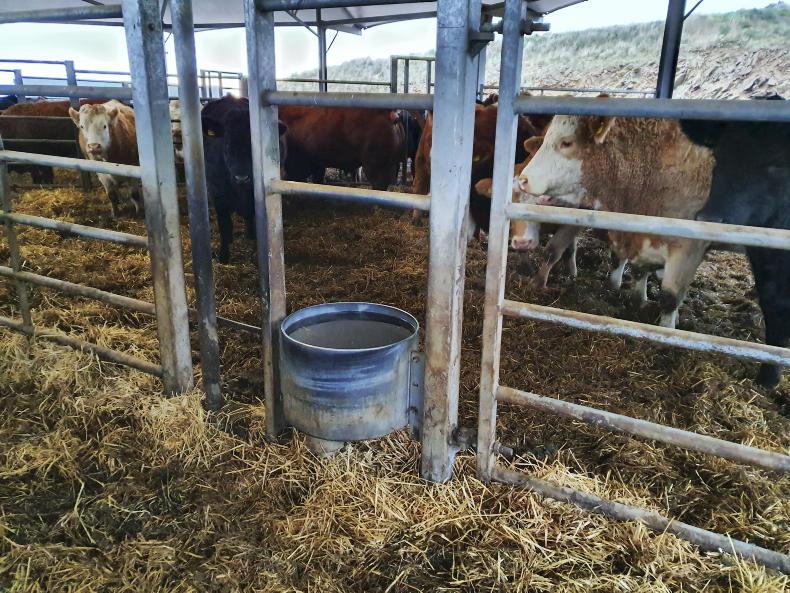The current cold snap is due to continue throughout the rest of the week and over the weekend.
I have spoken to a number of farmers in recent days who have found the water supply frozen when they went out to the shed in the morning.
While in most cases daytime temperatures are sufficient enough for the water to come back, it still means cattle can be left without water for 12 to 15 hours a day.
Where this becomes a serious issue is in finishing sheds, where cattle are on high concentrate diets.
Water intake
Cattle self-regulate their water intake depending on the level of dryness of their diet.
When on a silage-only diet, water intake can be quite low where the dry matter of the silage is low.
However, as you increase the level of meal being fed to cattle, the overall dry matter of the diet increases.
This will cause cattle to drink more water.
Constant access
Not having constant access to fresh clean water can reduce feed intake, which will have a negative effect on daily liveweight gains.
More importantly though, it can also lead to problems such as stomach upsets of acidosis.
In severe cases, this can make cattle very sick and even where stock do recover, it can cause lasting damage to the animal, limiting their growth potential.
There are two short-term options here for cattle on high concentrate diets:
Have an alternative water supply available during the hours where the water supply is frozen. This is fine for a short period of time or where you are not dealing with large numbers of cattle.Reduce the level of meal feeding until the cold period has passed and water pipes are no longer freezing at night. This option may be better where dealing with large numbers of cattle where supplying another water source is difficult or where the cold weather is due to last a prolonged period of time.
The current cold snap is due to continue throughout the rest of the week and over the weekend.
I have spoken to a number of farmers in recent days who have found the water supply frozen when they went out to the shed in the morning.
While in most cases daytime temperatures are sufficient enough for the water to come back, it still means cattle can be left without water for 12 to 15 hours a day.
Where this becomes a serious issue is in finishing sheds, where cattle are on high concentrate diets.
Water intake
Cattle self-regulate their water intake depending on the level of dryness of their diet.
When on a silage-only diet, water intake can be quite low where the dry matter of the silage is low.
However, as you increase the level of meal being fed to cattle, the overall dry matter of the diet increases.
This will cause cattle to drink more water.
Constant access
Not having constant access to fresh clean water can reduce feed intake, which will have a negative effect on daily liveweight gains.
More importantly though, it can also lead to problems such as stomach upsets of acidosis.
In severe cases, this can make cattle very sick and even where stock do recover, it can cause lasting damage to the animal, limiting their growth potential.
There are two short-term options here for cattle on high concentrate diets:
Have an alternative water supply available during the hours where the water supply is frozen. This is fine for a short period of time or where you are not dealing with large numbers of cattle.Reduce the level of meal feeding until the cold period has passed and water pipes are no longer freezing at night. This option may be better where dealing with large numbers of cattle where supplying another water source is difficult or where the cold weather is due to last a prolonged period of time. 





 This is a subscriber-only article
This is a subscriber-only article










SHARING OPTIONS: